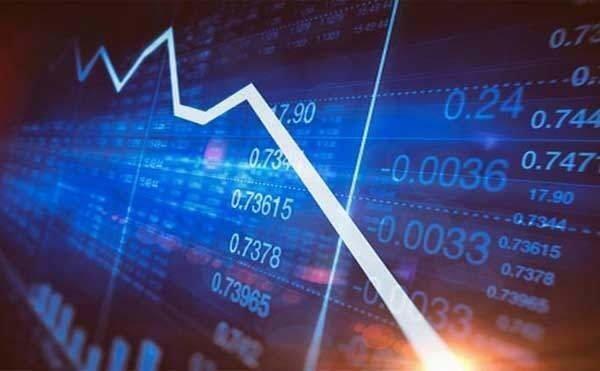
In this calculation, they might also deduct dividends if they are planned to be made and the company is publicly traded, so cutting dividends would limit the business’s ability to raise equity capital in the future. Note that the definition of these numbers will be documented in the loan agreement, so it can depend on negotiations, and there isn’t a formal definition, just industry norms. Below, we’ll explore the importance of free cash flow and what it reveals about a company’s financial performance. Keep reading for a comprehensive explanation of free cash flow or navigate directly to a section you’d like to learn more about. Because the price to free cash flow ratio is a value metric, lower numbers generally indicate that a company is undervalued and its stock is relatively cheap in relation to its free cash flow. Conversely, higher price to free cash flow numbers may indicate that the company’s stock is somewhat overvalued in relation to its free cash flow.
Is There An Opportunity With Jabil Inc.’s (NYSE:JBL) 33% Undervaluation? – Simply Wall St
Is There An Opportunity With Jabil Inc.’s (NYSE:JBL) 33% Undervaluation?.
Posted: Wed, 06 Sep 2023 10:13:32 GMT [source]
Occasionally, dividends paid to stockholders during the recent year are also deducted in calculating free cash flow. Compared to earnings per se, free cash flow is more transparent in showing the company’s potential to produce cash and profits. If a company’s sales are struggling, they may choose to extend more generous payment terms to their clients, ultimately leading to a negative adjustment to FCF. The income statement and balance sheet can also be used to calculate FCF. But because FCF accounts for the cash spent on new equipment in the current year, the company will report $200,000 FCF ($1,000,000 EBITDA – $800,000 equipment) on $1,000,000 of EBITDA that year. If we assume that everything else remains the same and there are no further equipment purchases, EBITDA and FCF will be equal again the following year.
Free Cash Flow (FCF) Formula
Shareholders can use FCF (minus interest payments) as a gauge of the company’s ability to pay dividends or interest. If a company has enough FCF to maintain its current operations but not enough FCF to invest in growing its business, that company might eventually fall behind its competitors. Free cash flow indicates the amount of cash generated each year that is free and clear of all internal or external obligations.
- However, under closer inspection, we might uncover that the company has taken on a sizable amount of debt that it does not have the cash flow to service.
- If you don’t actually have cash on hand for your business needs, you start hitting blockers in your operations.
- It refers to the cash that is generated from the business’s core operations.
- This remaining cash is available to the company for paying off debt, paying dividends to shareholders, or funding stock repurchase programs.
- Below are some of the common ways financial professionals measure the value and financial health of a particular business.
This is because it provides a better idea of the level of earnings that is really available to a firm after it covers its interest, taxes, and other commitments. While a healthy FCF metric is generally seen as a positive sign by investors, it is important to understand the context behind the figure. For instance, a company might show high FCF because it is postponing important CapEx investments, in which case the high FCF could actually present an early indication of problems in the future. While FCF is a useful tool, it is not subject to the same financial disclosure requirements as other line items in the financial statements. This is unfortunate because if you adjust for the fact that capital expenditures (CapEx) can make the metric a little lumpy, FCF is a good double-check on a company’s reported profitability.
Join over 140,000 fellow entrepreneurs who receive expert advice for their small business finances
Free cash flow measures the cash flow available for distribution to all company securities holders, including creditors. Banks that lend to companies want the company to be able to generate free cash flow so that the company is able to pay back the debt. Free cash flow is a measure of financial performance, similar to earnings, and its use is considered to be one of the non-Generally Accepted Accounting Principles (GAAP). By comparing cash flow to free cash flow, investors can gain a better understanding of where cash is coming from and how the company is spending its cash.
A company’s FCF is one of many tools that can be used to measure its financial health. For small business owners, FCF helps you determine if your company is able to expand or restructure, or if it’s likely to see a growth in profits. If you’re struggling to track the metrics of your company’s financial health, QuickBooks https://online-accounting.net/ can help. Our accounting software is designed to streamline your accounting and reporting tasks so you can focus on the important things, like growing your business. For example, a company with $100 million in total operating cash flow and $50 million in capital expenditures has a free cash flow total of $50 million.
How Are Cash Flow and Free Cash Flow Different?
If you’re seeking out investors, you may assume that this is a positive indicator of your financial health. Both cash flow and free cash flow can reflect the financial performance of the business over a given period, and how effectively you are managing cash. Analyzing free cash flow helps investors compare different companies to determine which is the more attractive investment. You can seamlessly compare free cash flow against other figures like your total cash flow for a deeper analysis of your cash management. Below is the cash flow statement for Apple Inc. (AAPL) as reported in the company’s 10-Q filing for the period ending December 28, 2019.

However, the price to free cash flow metric can also be viewed over a long-term time frame to see if the company’s cash flow to share price value is generally improving or worsening. You might find a company that cash and cash equivalents has more free cash flows than it does market cap or one that is very close to equal amounts of both. For example, a market cap of 102 million and free cash flows of 110 million would result in a ratio of .93.
Firm of the Future
Looking at FCF is also helpful for potential shareholders or lenders who want to evaluate how likely it is that the company will be able to pay its expected dividends or interest. If the company’s debt payments are deducted from free cash flow to the firm (FCFF), a lender would have a better idea of the quality of cash flows available for paying additional debt. Shareholders can use FCF minus interest payments to predict the stability of future dividend payments. Using free cash flow, investors can see if the company has enough cash on hand to repay creditors and equity investors after paying for its operating expenses and capital expenditures.
However, the indirect method tends to be the more popular choice since it’s more straightforward and scalable for a growing company. One option is to change the due date on your invoices or start sending them out 30 days before each loan payment is due. Easier would be to call the bank—they’re typically able to change the date your loan payment comes out to one that works for you. Blogs, books, magazine articles, and your next-door neighbor all have ideas to help you make more money.
Supercharge your skills with Premium Templates
The lender would subtract the current debt payments from free cash flow to determine the amount of cash flow available to pay for additional borrowings. Many analysts feel dividend outlays are just as important an expense as capital expenditures. The board of directors of a company may elect to reduce a dividend payment. However, this usually has a negative effect on the stock price, as investors tend to sell holdings in companies that reduce dividends. EBITDA can be easily calculated off the income statement (unless depreciation and amortization are not shown as a line item, in which case it can be found on the cash flow statement).
By analyzing both cash flow and free cash flow, we can see how much a company generates from its normal course of operations, what they’re investing in, and how much debt they’re paying down or taking on. As a result, investors can make a more informed decision as to the financial viability of the company and its ability to pay dividends or repurchase shares in the upcoming quarters. A large amount of free cash flow can mean that you have enough money to pay your operating expenses with some leftover. That leftover amount can be used for distributions to investors, reinvestment in the business, or stock buybacks. Price to free cash flow removes capital expenditures, working capital, and dividends so that you compare the cash a company has left over after obligations to its stock price. As a result, it is a better indicator of the ability of a business to continue operating.

Recent Comments